Making a Citizen Sleeper TTRPG
Cycles of the Eye is a solo, tarot-based journaling game based on the Citizen Sleeper video game. It was made by me and Citizen Sleeper’s creator, Gareth Damian Martin, and published in 2024 by Lost in Cult alongside a sumptious Citizen Sleeper Design Works book. This is going to be a rambling, incomplete list of reflections about the project.
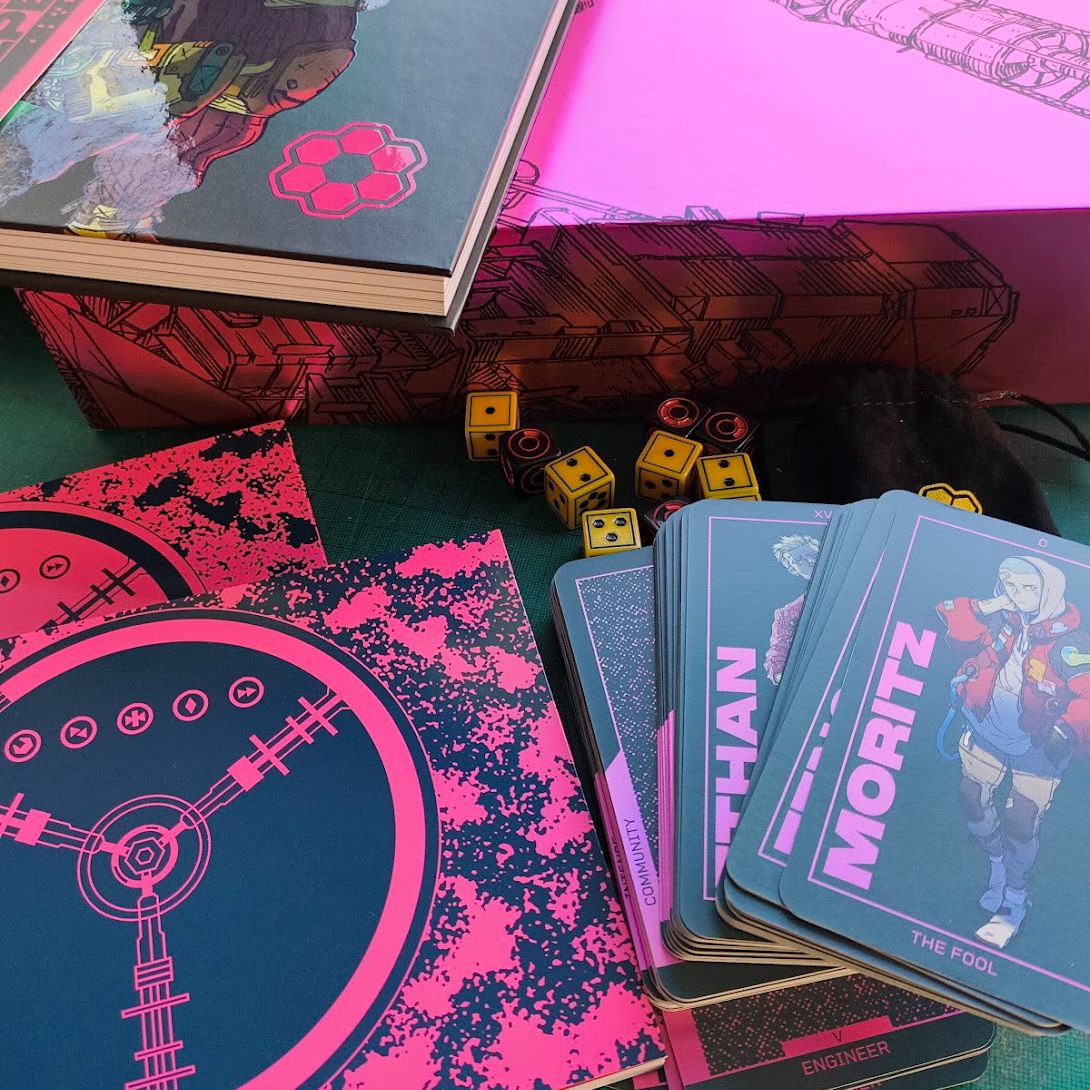
Gareth originally got in contact with me in January 2023 because they were fond of Thousand Empty Light and its accompanying soundtrack module, Sleeping in a Drowning Stone. By sweet coincidence I had treated myself to Citizen Sleeper the Christmas just gone. One of those universe smiling down on your moments.
This was by far the biggest project I’ve worked on to date, and the first game I’ve made in direct collaboration with someone else. Not to mention my first time touching tarot…
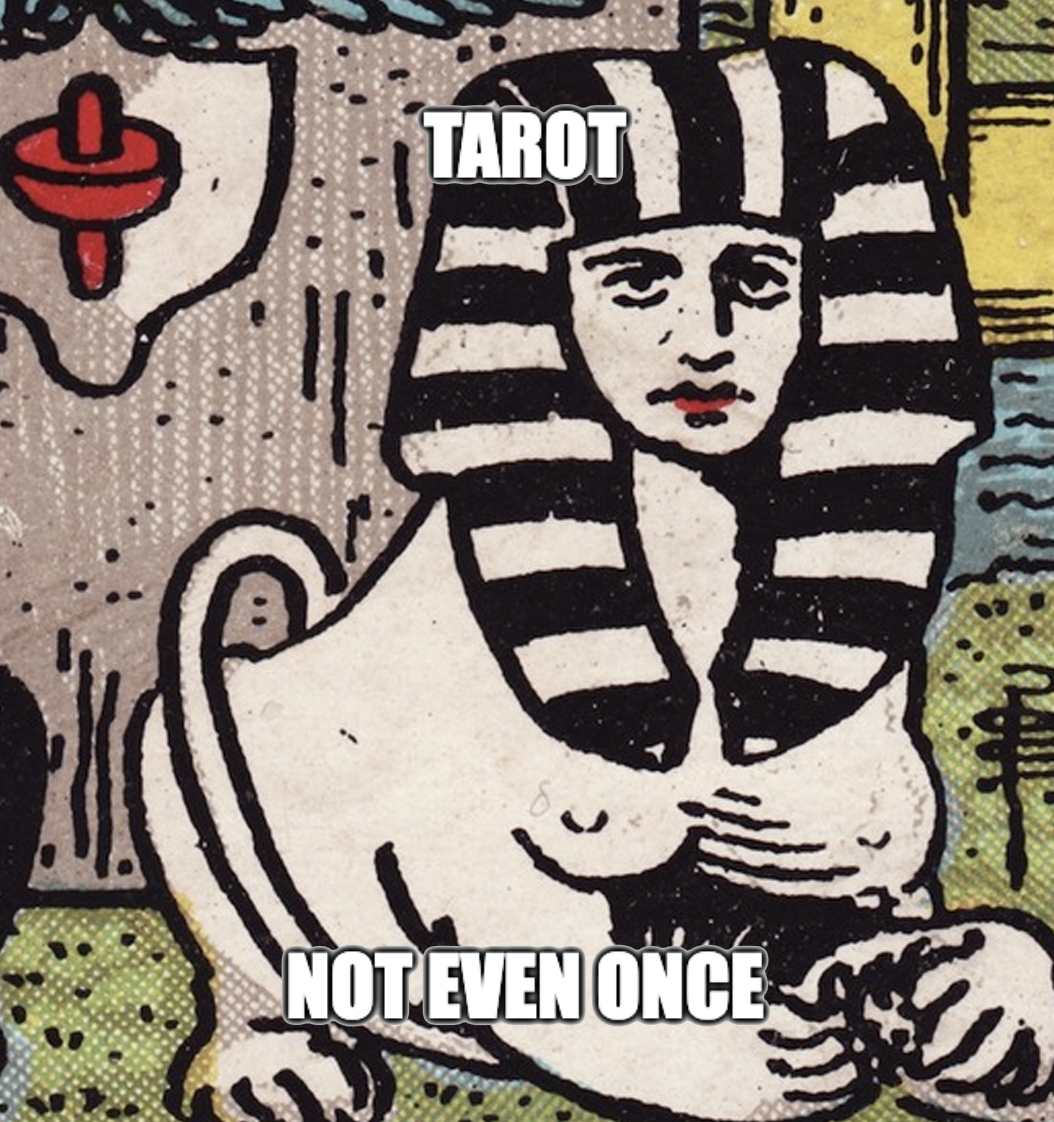
Game to Game
When I joined the project, Gareth had some idea of the shape they wanted the game to be: solo, focussed on journaling, and involving tarot cards. Given how much Citizen Sleeper is informed by TTRPG mechanics, there were also some obvious things to include straight from the video game; assigning dice from a pool of results, dealing with diminishing resources, encountering named characters…
From the start it was clear that Cycles would be a game that allows players to explore an alternate universe version of Erlin’s Eye. The results of play could not be canon to the Citizen Sleeper story, because that would be too prescriptive for the player being asked to interpret prompts, particularly if they were coming to the TTRPG without experience of the video game. Instead the aim was that exciting ‘what if’ feeling, and providing the right sort of conditions for it.
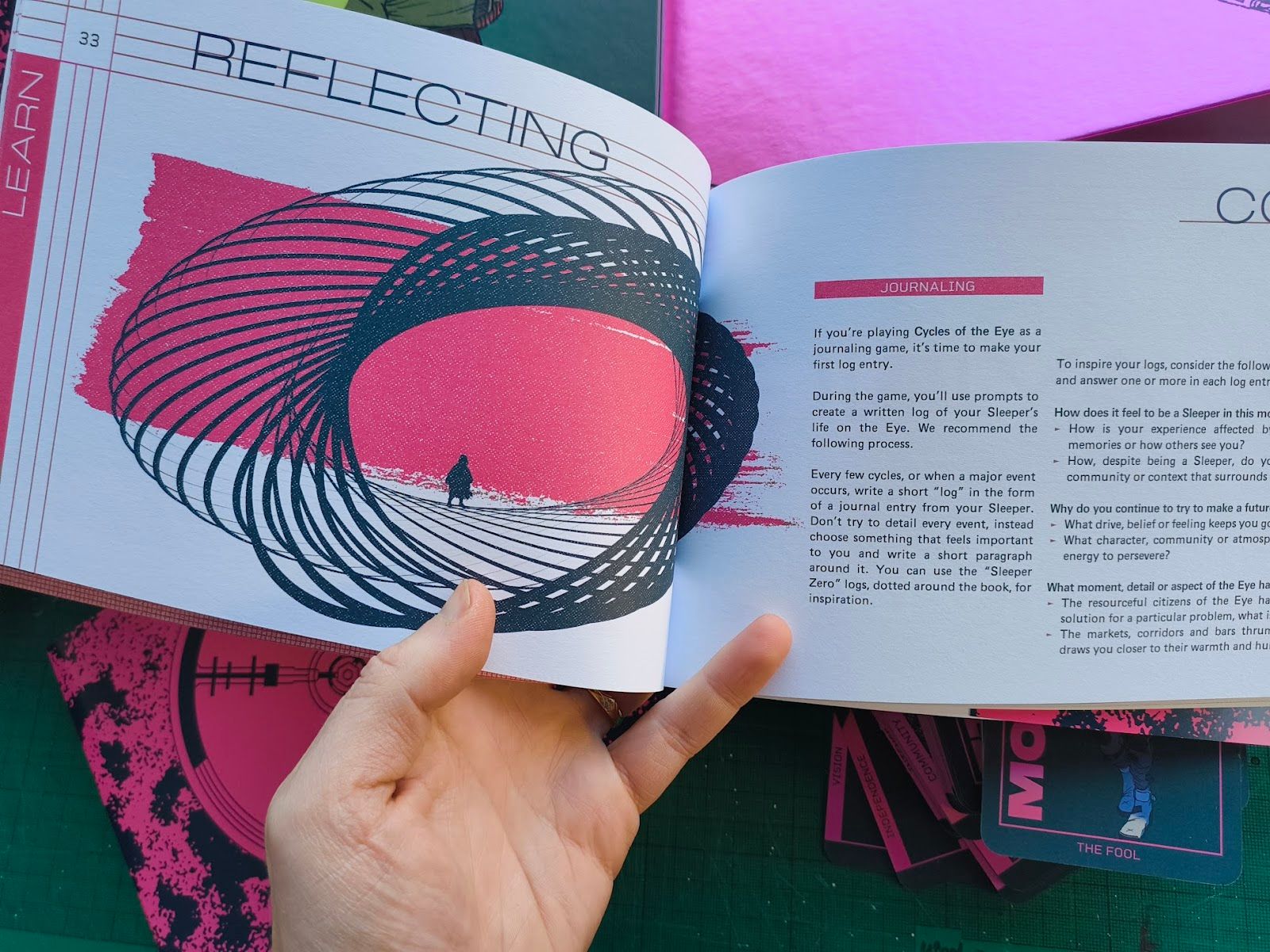
Calling it quits
One consequence of Cycles being explorative and reflective was that for some time during development it lacked a win condition. It’s easy enough to create a fail state; lose enough energy and your body starts to deteriorate. And the middle part is essentially the meat of the thing; explore the Eye, make connections, craft a narrative. But deciding when this sort of game should come to a natural end is a lot harder. How long does this game want to be? What triggers should we use to signal the end?
In the end (ha!) we added in something concrete but with the proviso that the player can decide to carry on should they wish. If they’re not ready for their time on the Eye to come to an end, that is fine. Overall this reflects the pace of Cycles. It is about as rushed or as plodding as you want it to be. The end is a formality, the journey to get there is the focus.
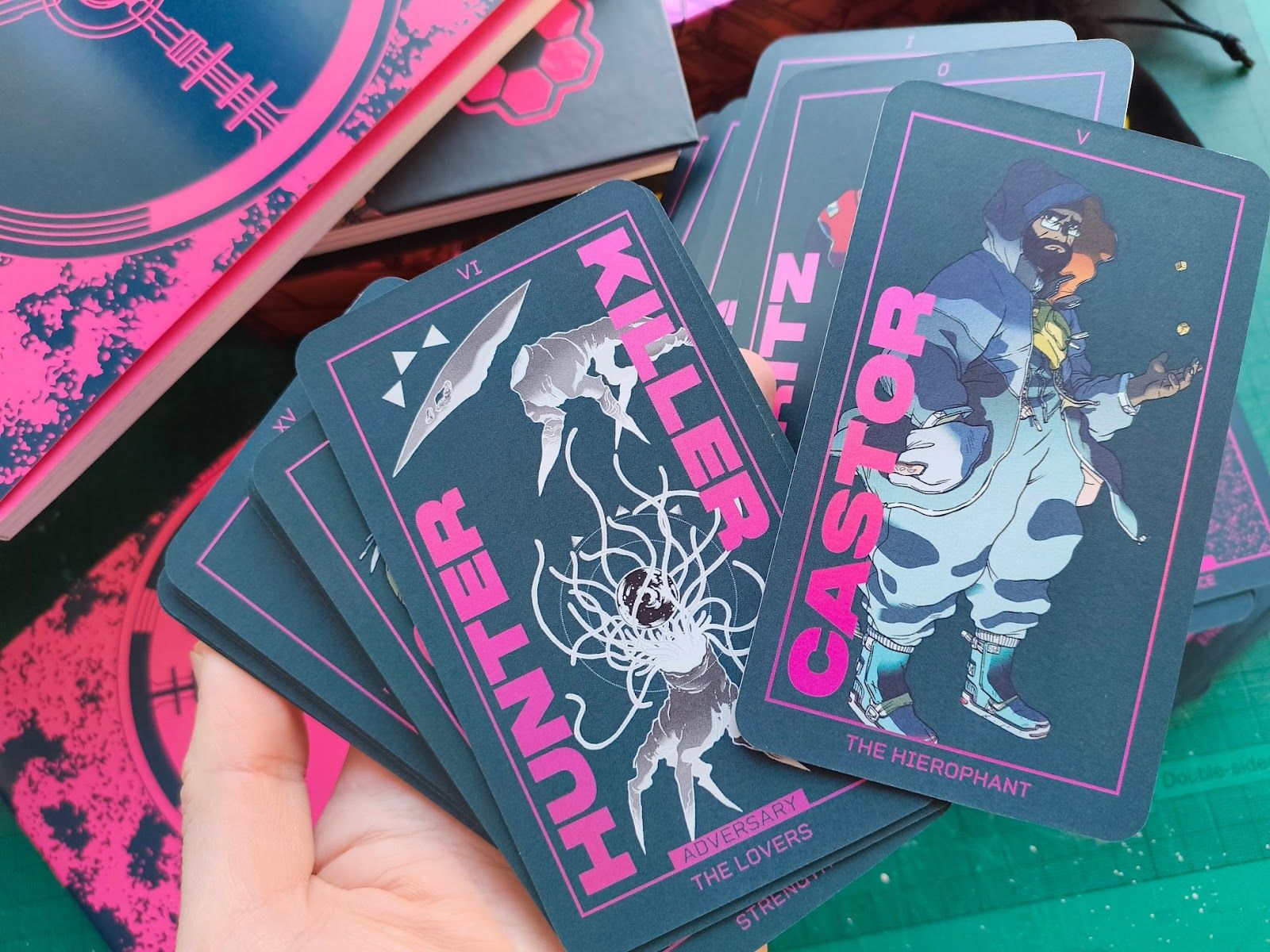
Just one more rule
Naturally the complexity of the game’s mechanics ebbed and flowed during development, with a countless number of wouldn’t it be cools and why don’t we justs as high water marks along the way. Making a game is a bit like making a home for a cute baby animal. Your overwhelming desire is to provide it with anything it could possibly need or desire. Too many things. A confusing, overstimulating number of things.
To bastardise a quote from Thoreau: “A designer is rich in proportion to the number of things they can afford to let alone.”
Over time, a burgeoning game tells you just what it needs. Ultimately Gareth and I chiselled away as much of the shiny, distracting stuff from the rules that we could bear to ditch. I often think about Miller’s law, the idea that a person can only keep between 5 and 9 things in their mind at once. Every exception in a ruleset — every but – increments this demand on a player’s short-term memory, and it’s compounded in a solo TTRPG where the cognitive load isn’t shared across a group.
As one example, in the tangle of procedures we’d sketched out in an earlier iteration of the game, we found we were asking the player to do a lot of card sorting and managing each step of the way. Decidedly un-fun stuff. The solution was to frontload the preparation of the tarot deck so that once it’s done you don’t need to worry about it during play.
Mitigate this!
We frequently wrestled with dice mitigation. Just about how much fun is it to roll terribly and not be able to do anything? Various mechanics sprung from this thought. A ‘fortune die’ ticks up each time things go awry and when it gets to 6, it can be used like one of your normal dice before being reset again.
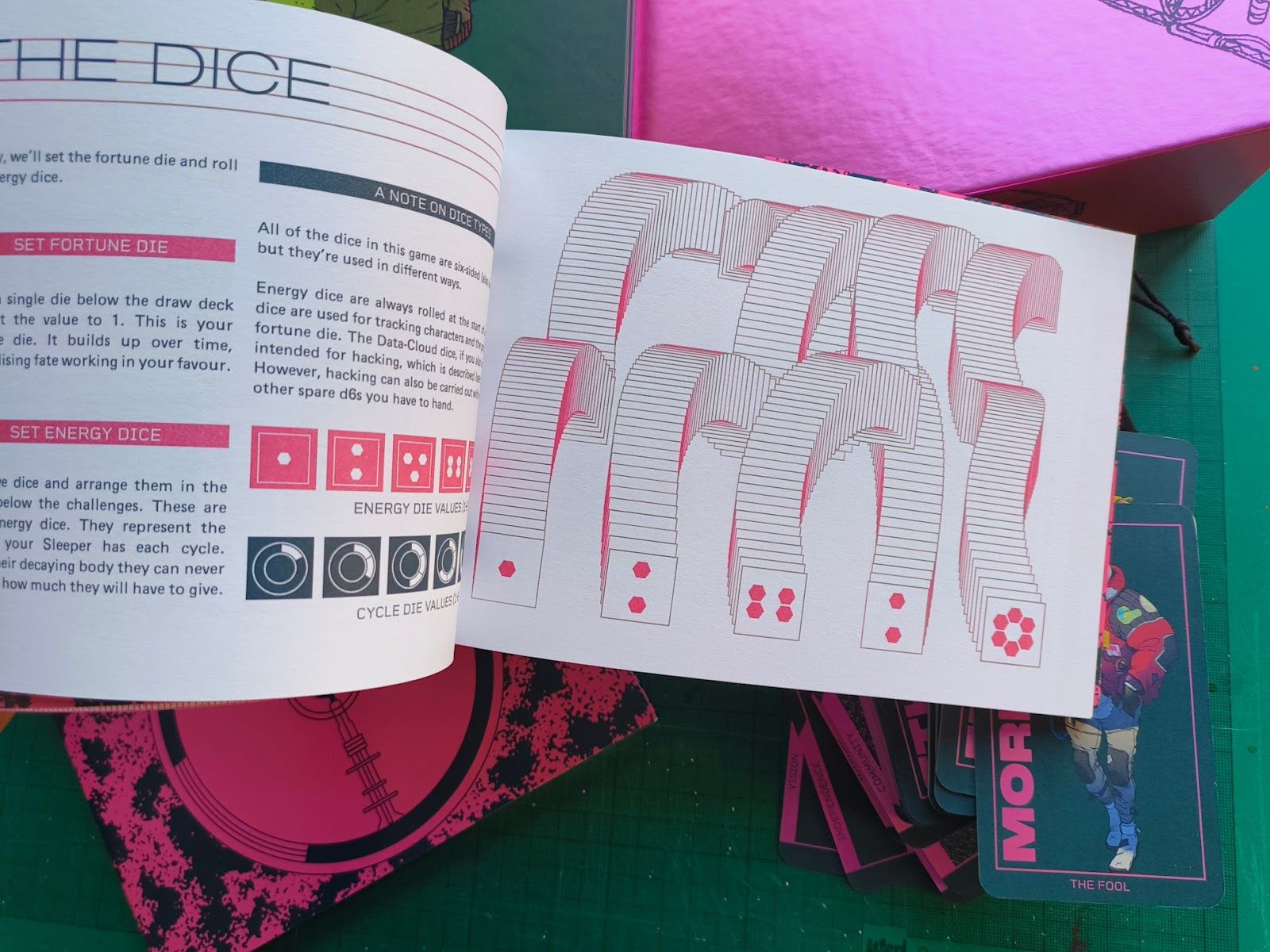
Elsewhere, we settled on three being the right number of concurrent challenges to present to the player. If their dice results didn’t make a dent in one, maybe they could in another. More than three, we found, and your play space is looking pretty cramped and it’s hard to keep the story threads you’re developing clear in your head.
My and Gareth’s fascination with the data cloud from the video game eventually manifested as ‘hacking’ — a gamble that can potentially supercharge one of your dice, with lower values increasing your chances.
Always a balancing act. I’m still working out how to be a ‘rich’ designer.
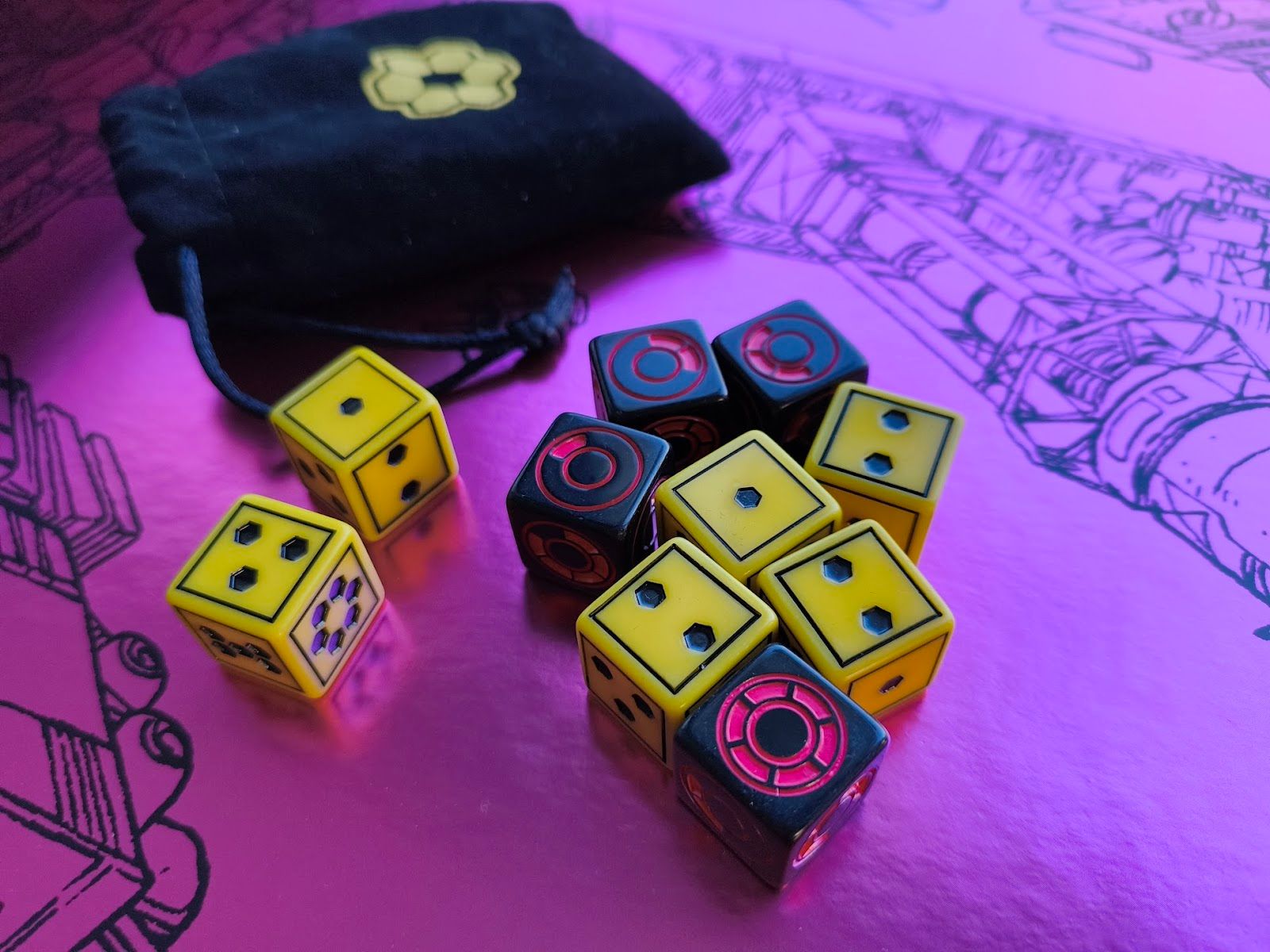
Laying it all out
Gareth not only brought me onto the project to help with the mechanical design but also the layout and graphics. The focus was very much on a zine aesthetic. Any time someone tells me they want the design to be a bit fucked up is precious music to my little ears. Citizen Sleeper’s themes of the blurring of digital and analog worlds, and physical and virtual degradation also very much chime with my work.
Construction zone
I created a semi-rigid structure to the page layout, with tramlines that hold up titles like they’re a sort of scaffolding.
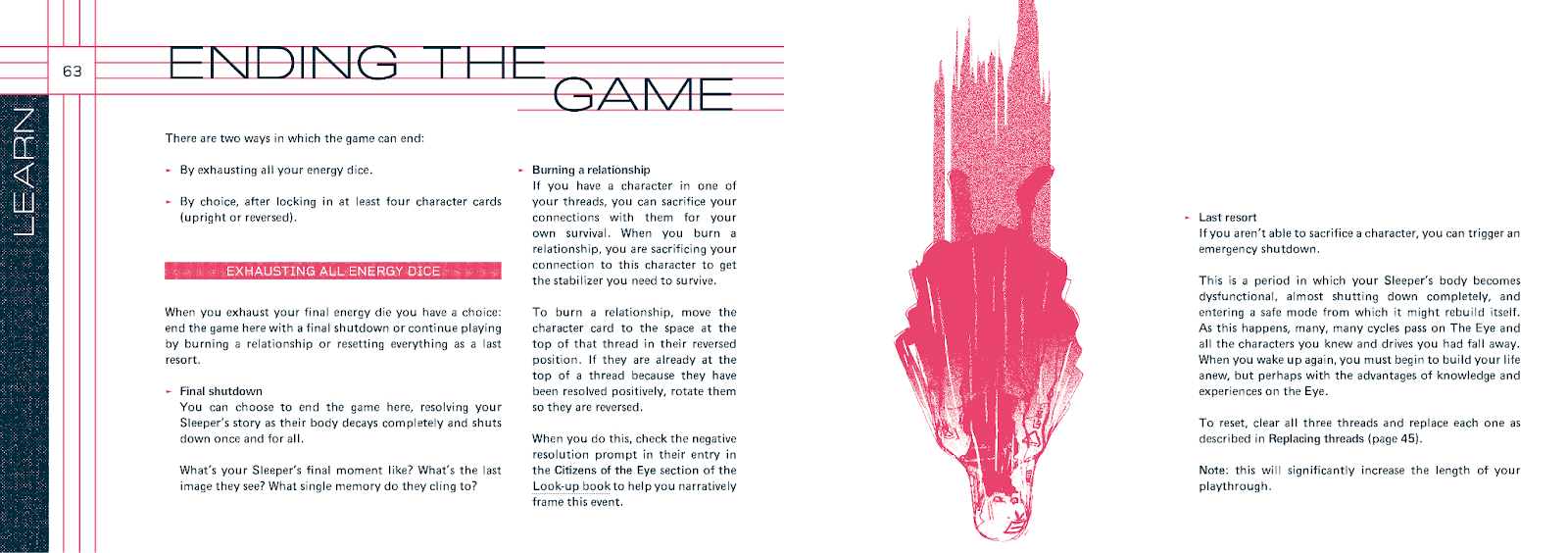
And then I broke that structure in a few key moments, like with hacking where you go beyond the boundaries of physical reality.
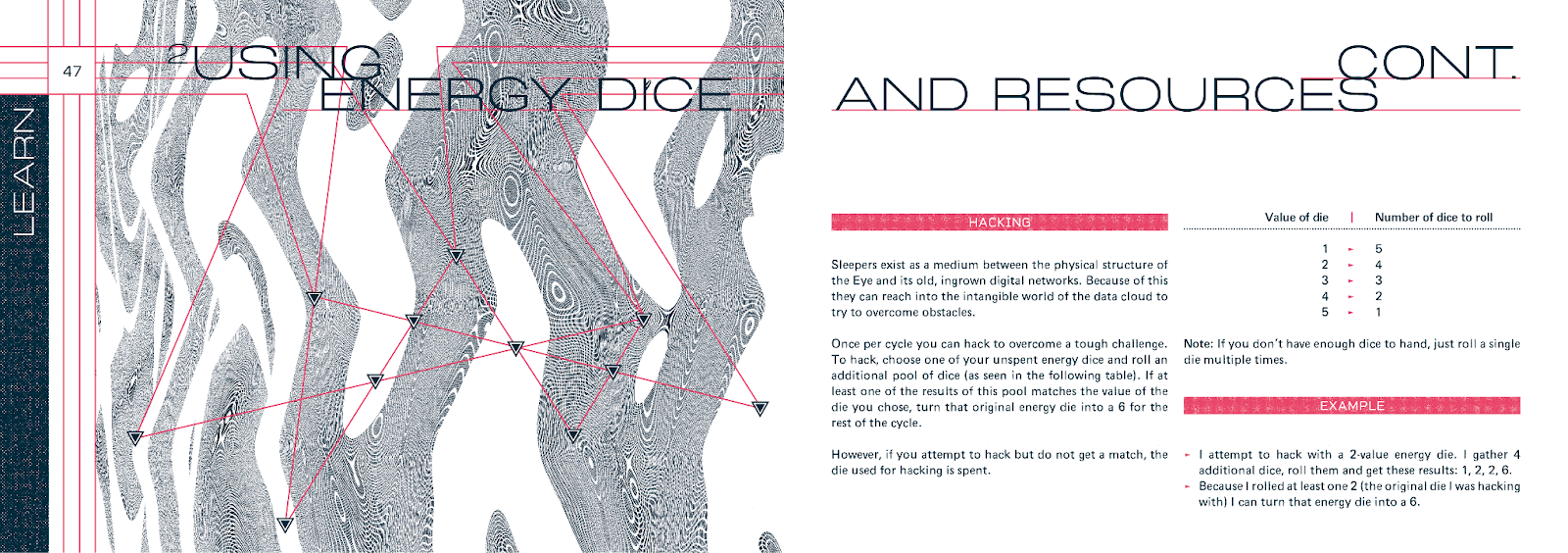
Or this section detailing the ‘Hunt’ gameplay variant, where the threat of pursuit feels a lot more oppressive. It suggests the forces-that-be can bend reality to their own ends.
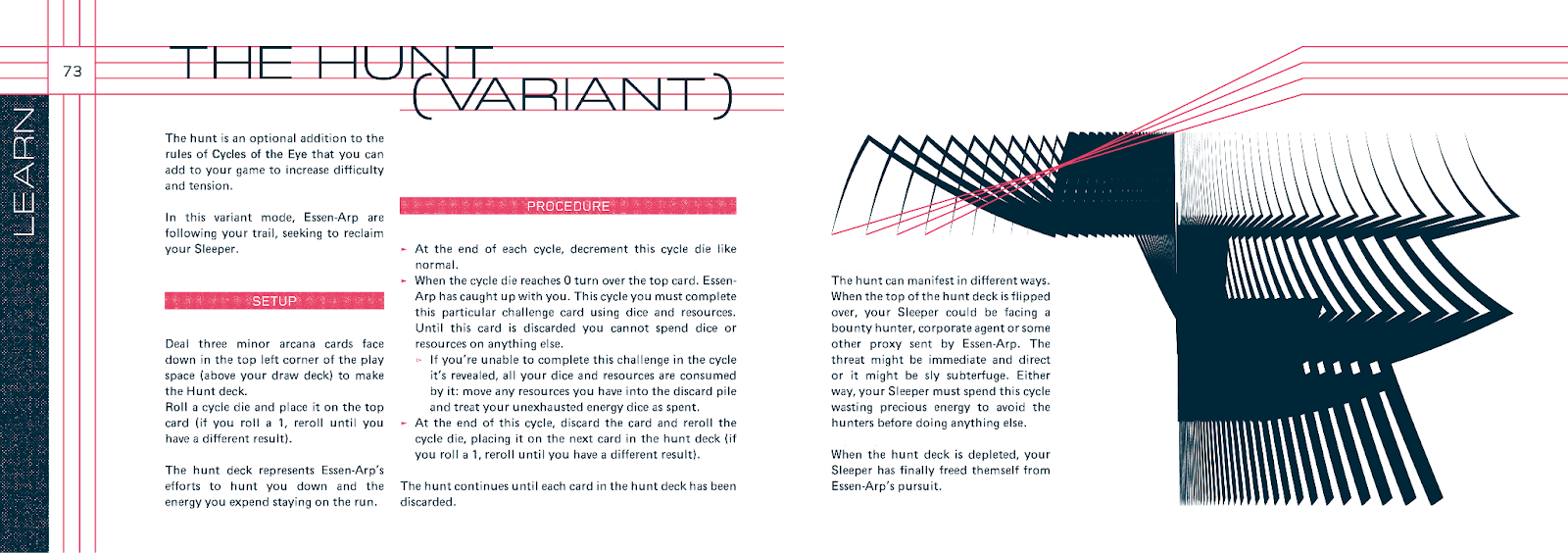
I took a wicked pleasure in making this empty spread, where it feels like we’ve come to the end of the scaffolding, the edge of the Eye. The edit note from Will Jobst reads simply: “lot of space here”.
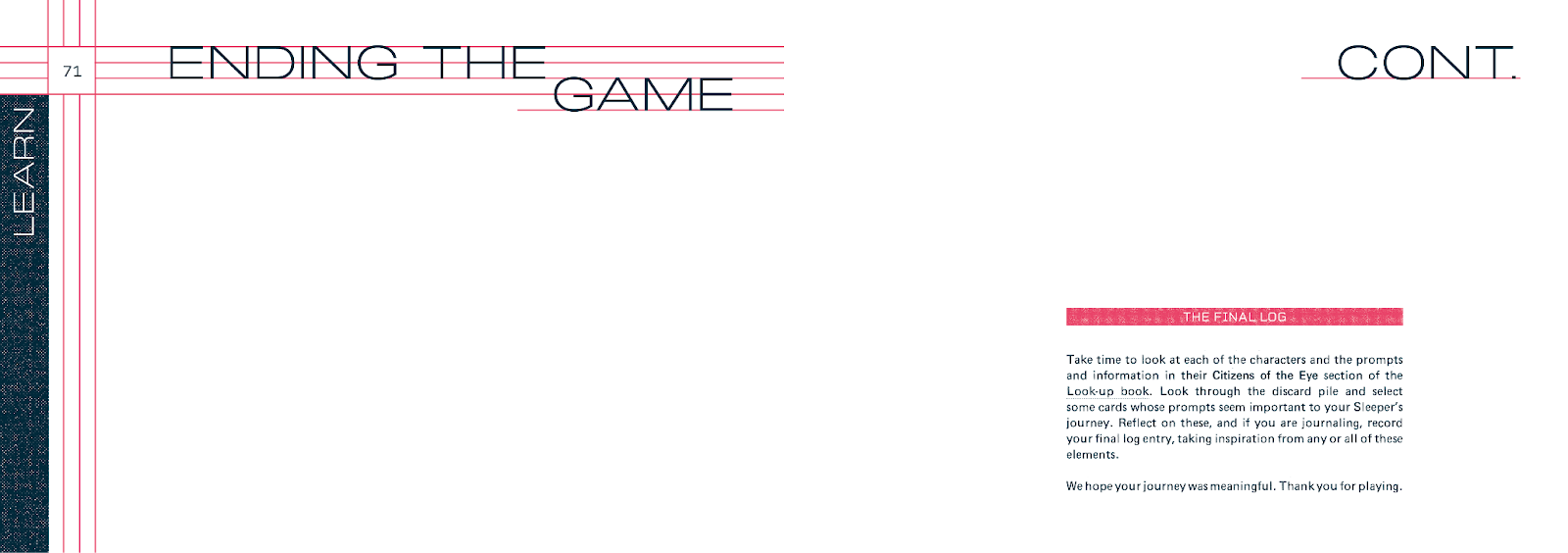
Learning zone
Laying out this game was a big lesson for me. The sheer scope of it was beyond what I’d laid out before and I don’t think Gareth or I could predict how long it would end up being.
As it happens, what started off as a humble zine grew too big for its boots. The page count ended up being too large for staple-bound, and the hundred or so pages of layout did not account for perfect bound margins. A serendipitous outcome! Because the one fat zine became two manageable zines.
All of the reference material, the stuff that a player would need to regularly check during play — the card prompts, the character details — found a home in between its own covers (‘Citizens of the Eye’). No more rummaging around in the rule book to see what Neovend’s deal is.
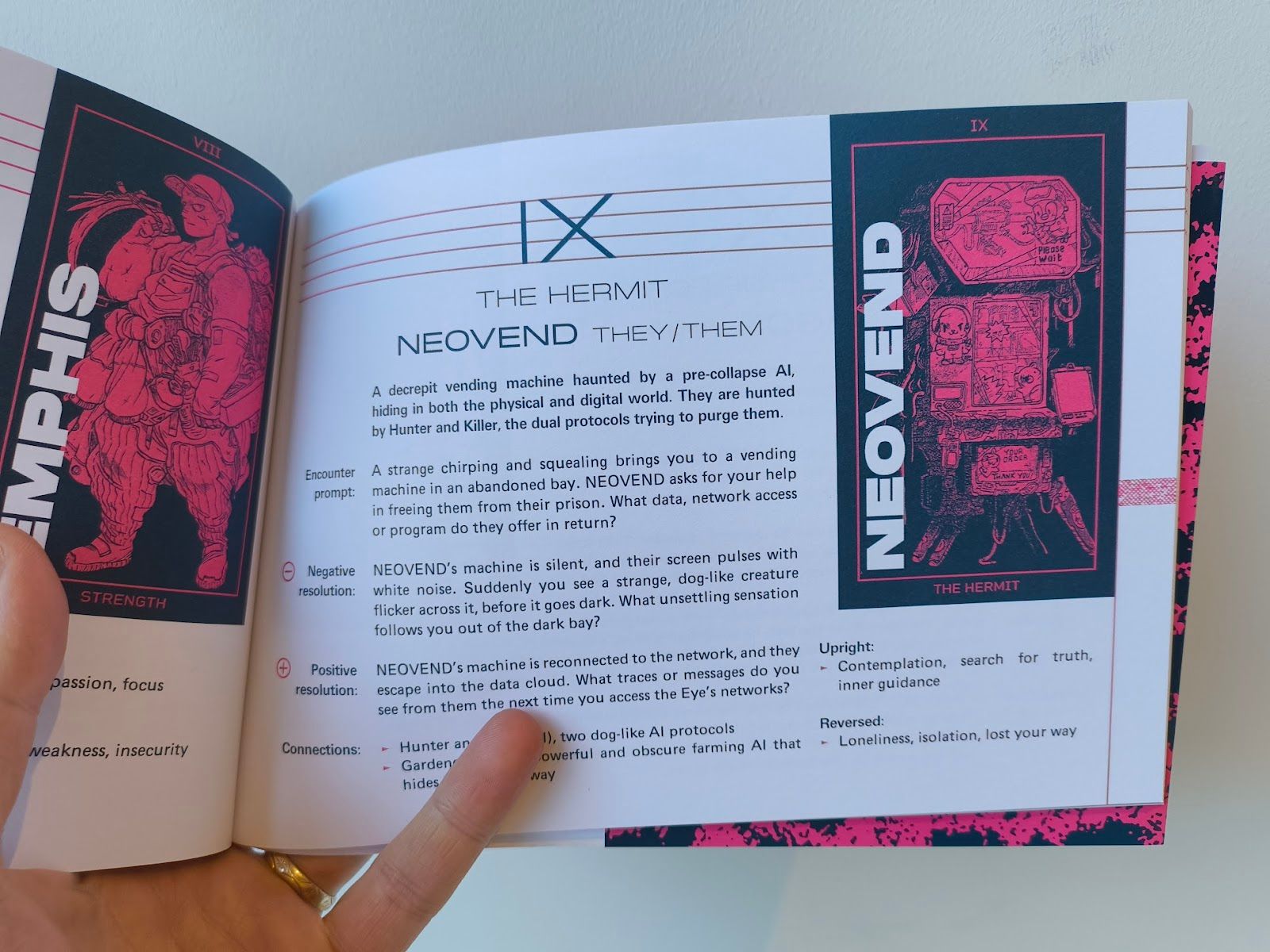
This project was also a lesson in laying things out smartly. Because, well, resizing a title on a hundred different pages… turns out not to be fun. I levelled up my InDesign skills with this one.
In space
One luxury with this project is that I wasn’t the one dealing with the logistic overheads of the publication. Usually the page count on my own projects is predetermined, everything is a tight optimisation that ultimately comes down to the cost of production and shipping. Freed of this worry, I was able to stretch out more than I would normally, making sparser spreads like this that may be some of my favourites.
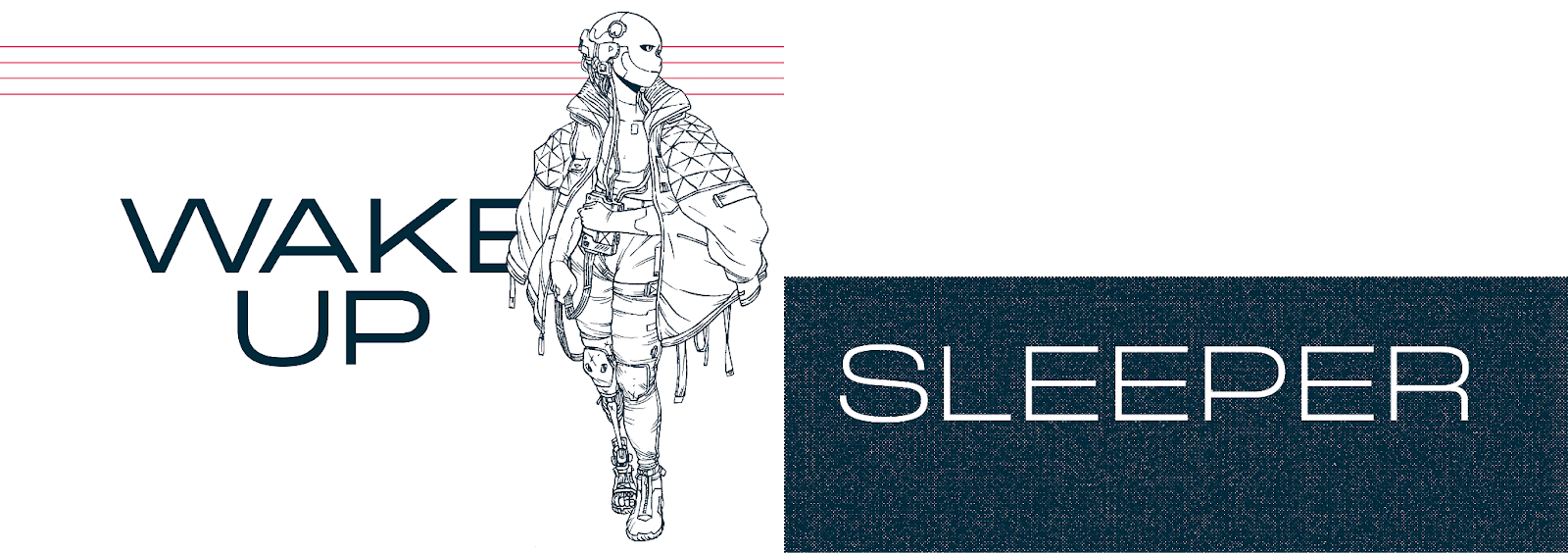
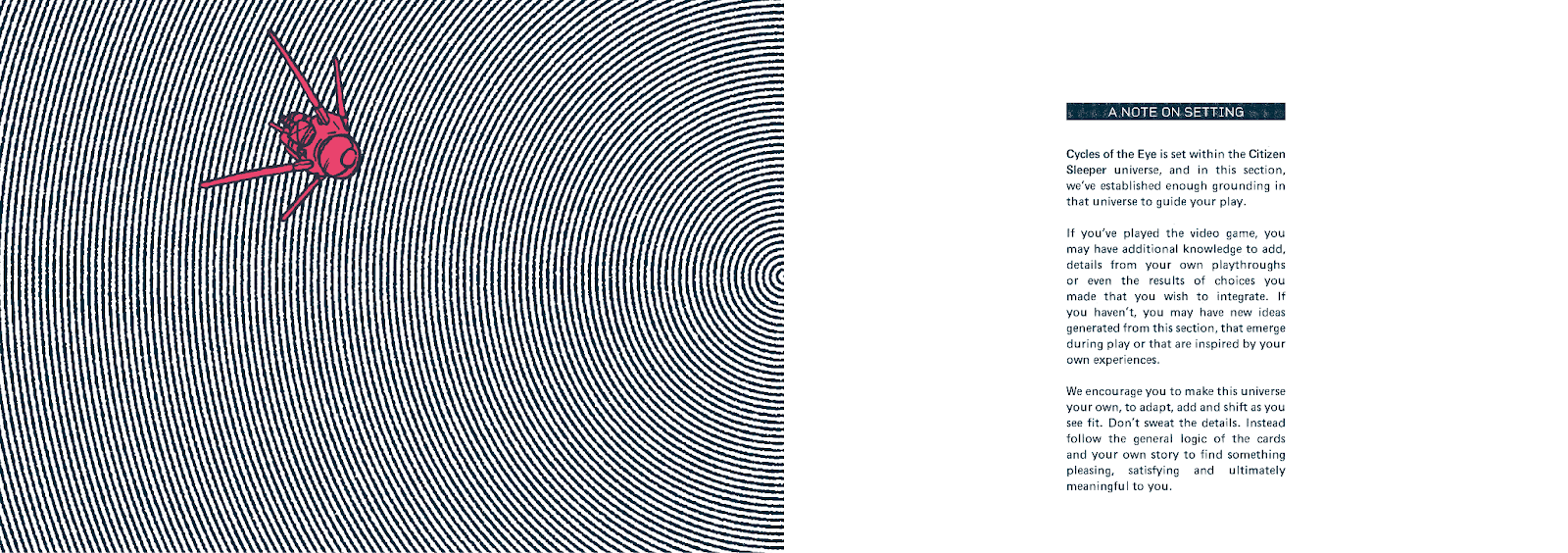
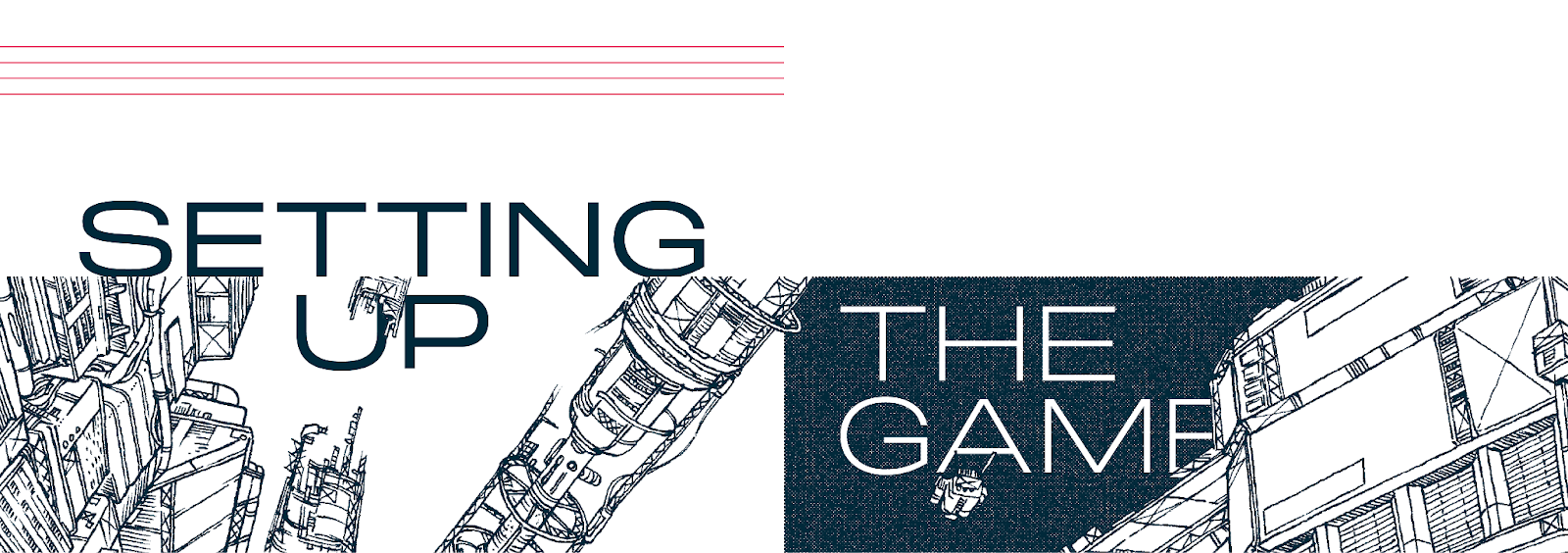
The wheel of fortune
This was a fascinating project to be involved in, not least because of being invited into the orbit of this incredible, expansive world that Gareth has created. Being trusted to have creative license to apply my own sensibilities to a game like this is very rewarding. And for that I will be forever grateful.
You can order Cycles of the Eye from Lost in Cult.